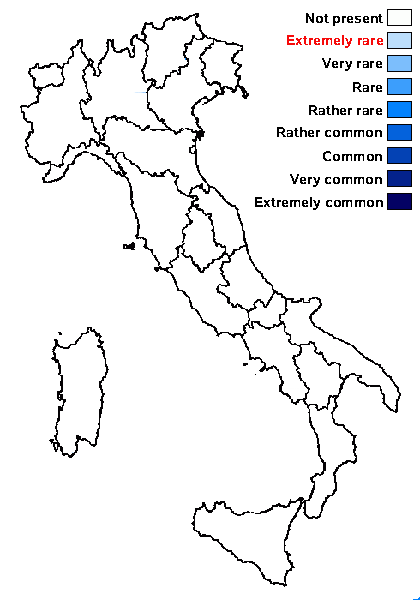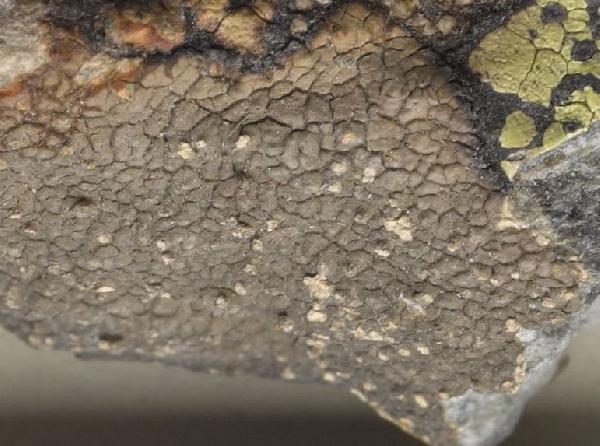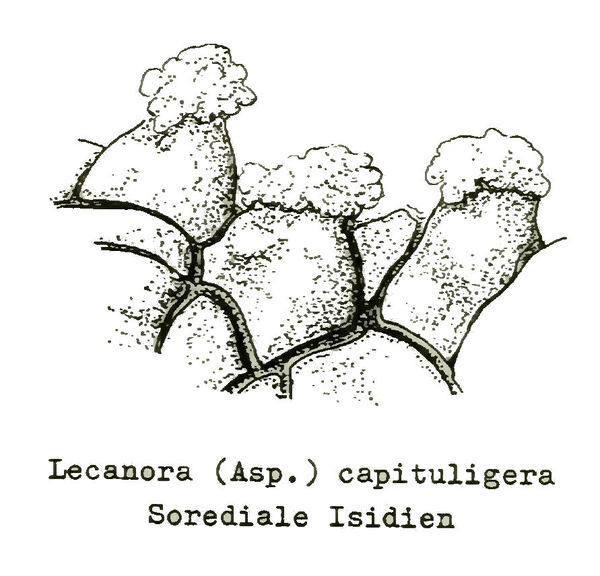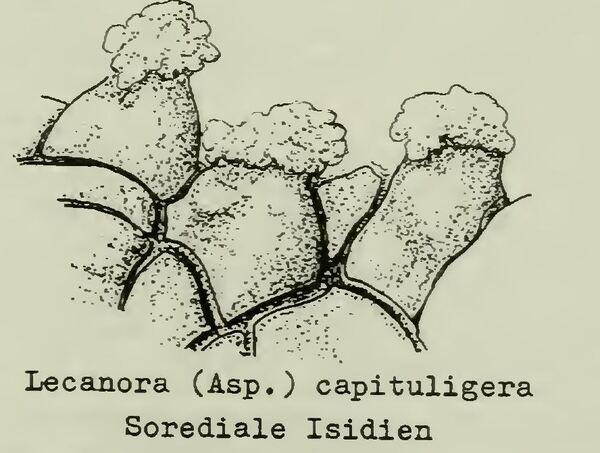Aspicilia capituligera (Poelt) Poelt
Mitt. naturw. Ver. Steiermark, 124: 97, 1994.. Basionym: Lecanora capituligera Poelt - Mitt. bot. Staatssamml. München, 4: 179, 1957.
Synonyms:
Distribution:
Description: Thallus crustose-placodioid, episubstratic, pale to medium grey, forming wide patches, areolate in central parts, the radiating lobes with darker margins. Central areoles obtusely angular, 0.5-1 mm wide, with short, thick, broadly conical isidioid papillae which break up apically giving rise to capitate soralia bearing granulose soredia. Cortex paraplectenchymatous, 30-40 µm thick; algal layer c. 50 µm thick; medulla white, with numerous, 1.5-4 µm wide oil cells, I-. Apothecia rare, aspicilioid, at first immersed in the areoles, then adnate, up to 1 mm wide, with a rough, black epruinose disc, and a slightly raised, papillose-sorediose thalline margin. Exciple poorly developed; epithecium greenish; hymenium colourless, 100-130 µm high; paraphyses simple or rarely slightly branched in upper part, submoniliform, the apical cells slightly swollen; hypothecium colourless. Asci 8-spored, clavate, the thin outer coat K/I+ blue, the wall and apical dome K/I-. Ascospores 1-celled, hyaline, ellipsoid, often poorly developed, 14-18.5 x 7.5-10 µm. Pycnidia sparse, black, immersed. Conidia thread-like, straight or slightly curved, (13-)18-24 x 0.7-1 µm. Photobiont chlorococcoid. Spot tests: cortex and medulla K- , C-, KC-, P-, or medulla K+ faintly yellow. Chemistry: medulla with traces of substictic acid.Note: periodically submerged in creeks of the Alpine belt; known from a few stations in the Alps (Switzerland, Austria), to be looked for in the Italian Alps.
Growth form: Crustose placodiomorph
Substrata: rocks
Photobiont: green algae other than Trentepohlia
Reproductive strategy: mainly asexual, by soredia, or soredia-like structures (e.g. blastidia)
Poorly known taxon in need of further study

Predictive model
Growth form: Crustose placodiomorph
Substrata: rocks
Photobiont: green algae other than Trentepohlia
Reproductive strategy: mainly asexual, by soredia, or soredia-like structures (e.g. blastidia)
Poorly known taxon in need of further study

Predictive model
 INDEX FUNGORUM
INDEX FUNGORUM
 GBIF
GBIF




